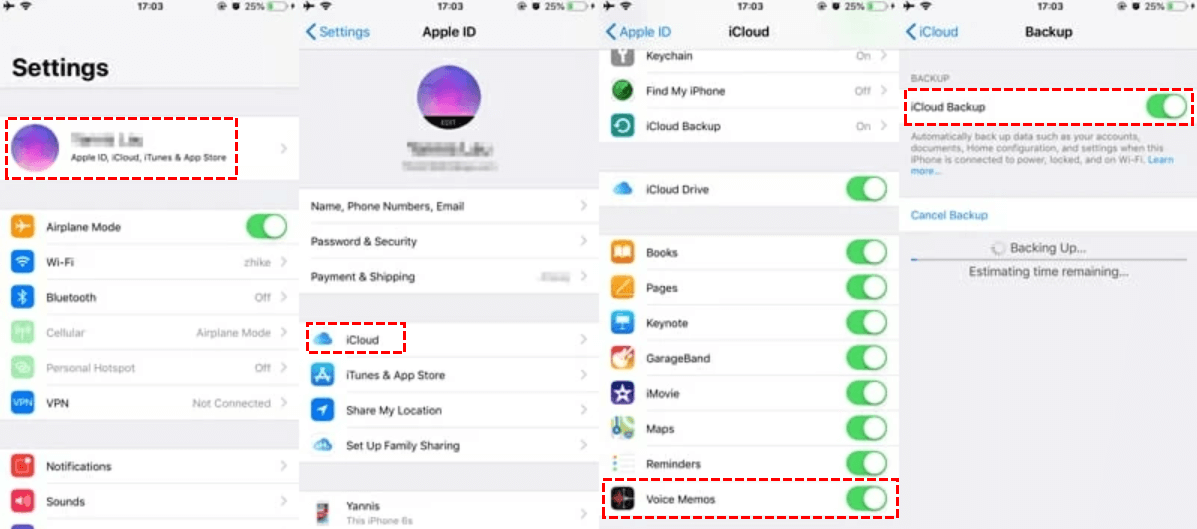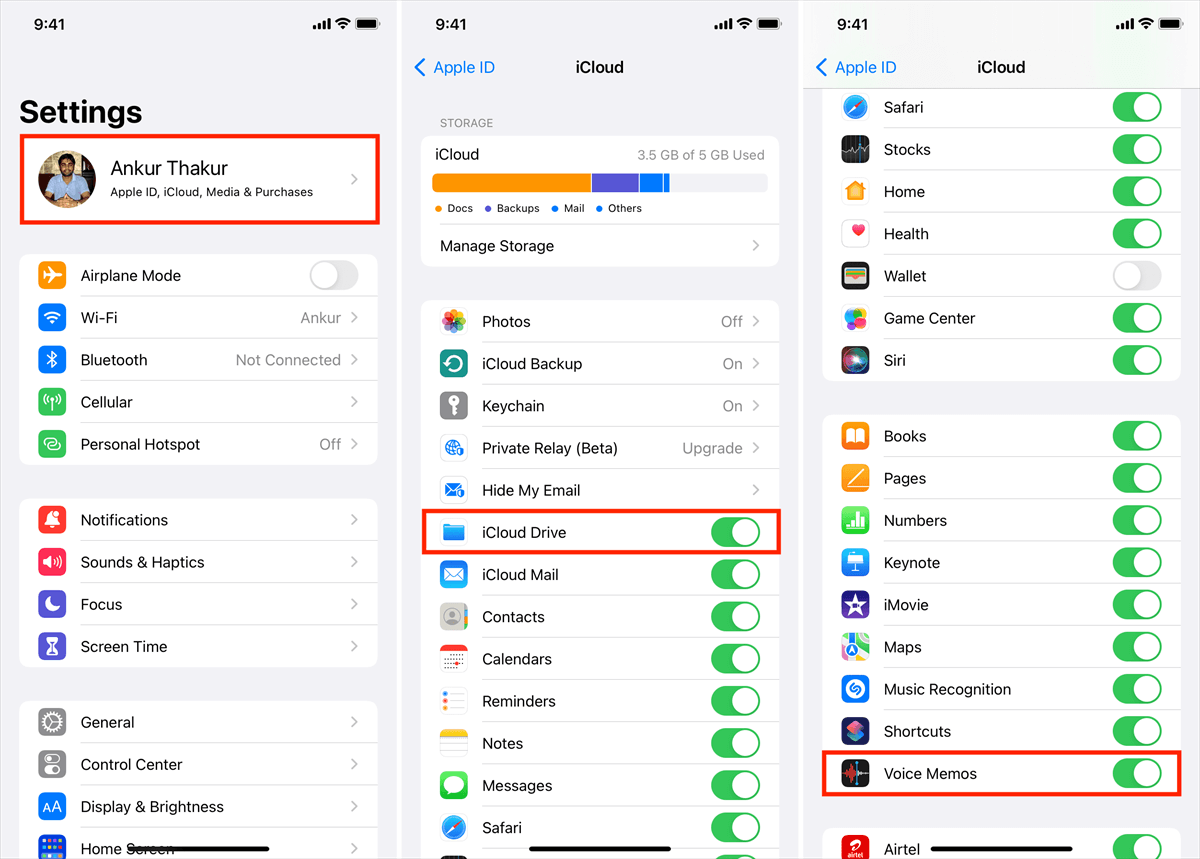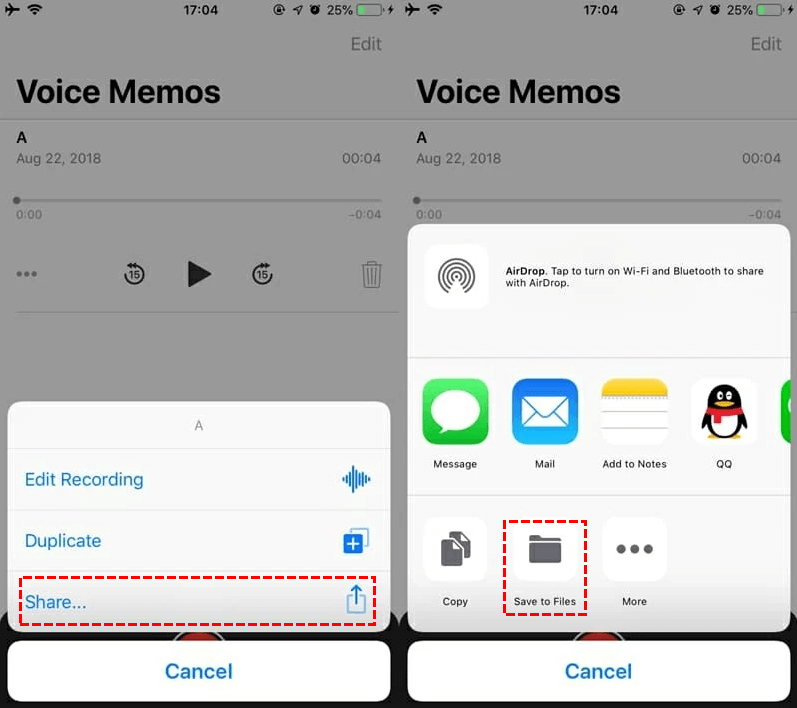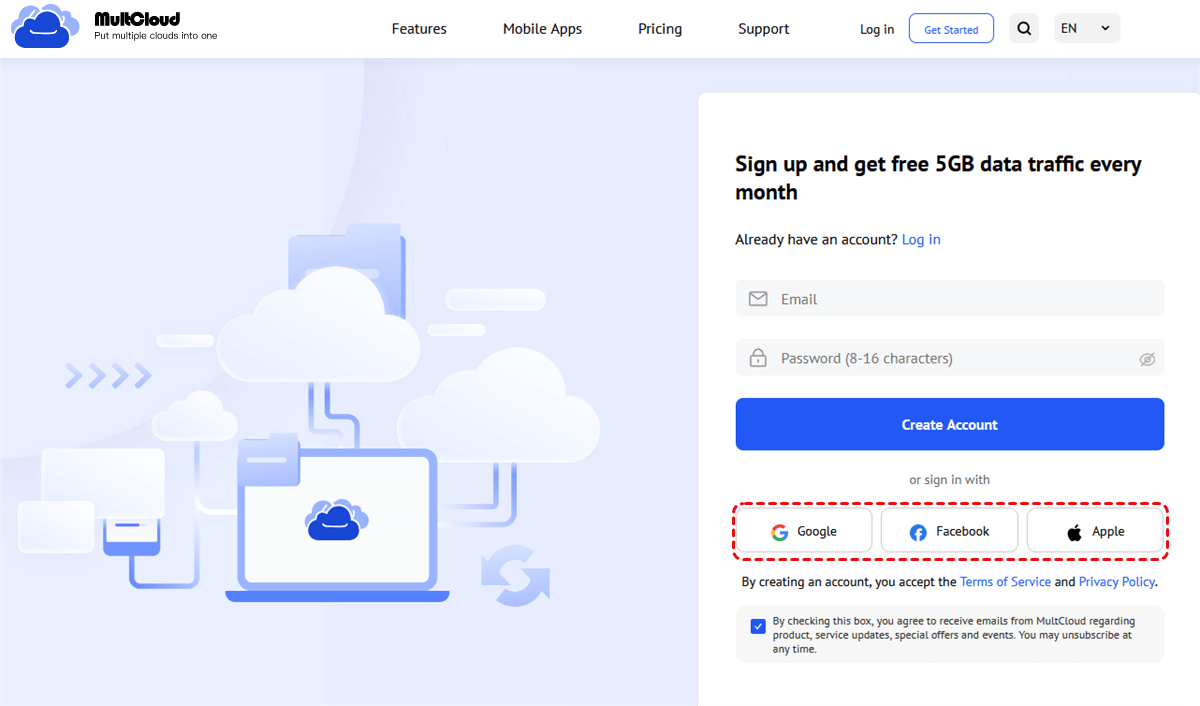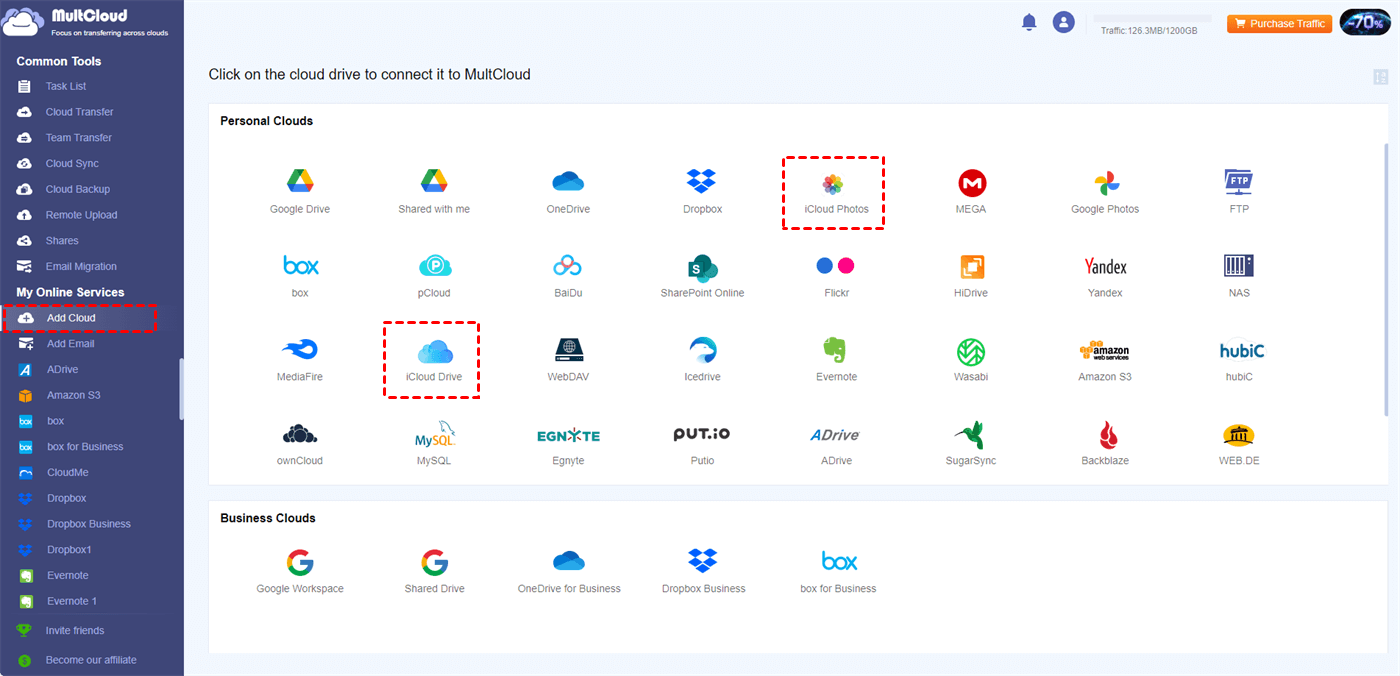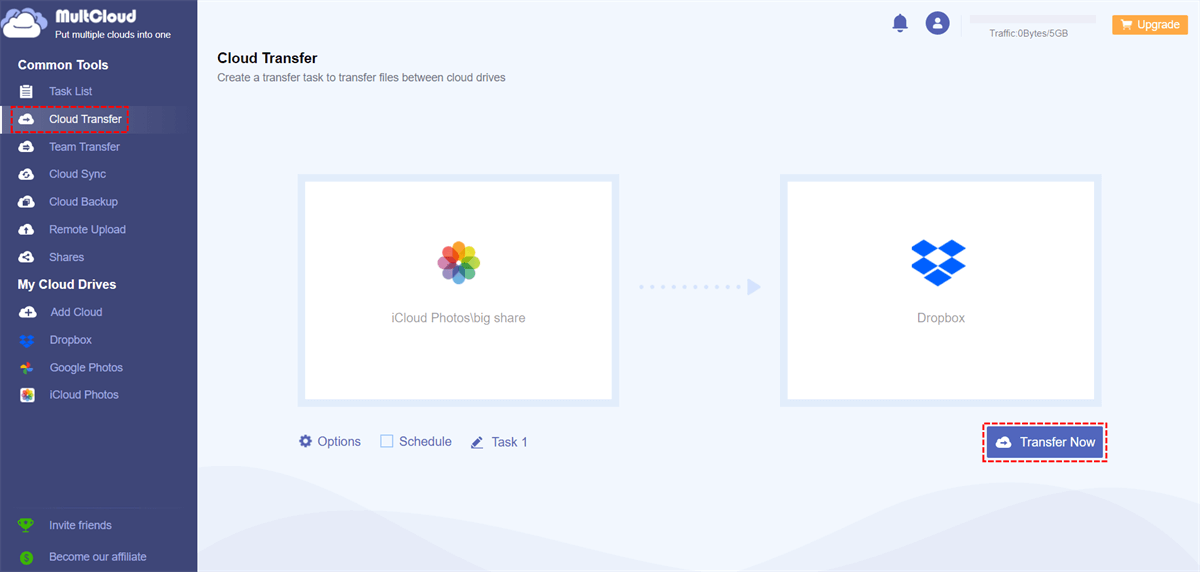Quick Search:
Are Voice Memos Saved to iCloud?
Voice Memo backups to iCloud? Where are they?!?
- Question from https://discussions.apple.com/
Yes, voice memos are saved to iCloud, the prerequisite is enabling the iCloud backup for Voice Memos. You can use it to store your voice recordings in iCloud, making them open from any device related to your Apple ID. The consolation of having your voice memos backed up to iCloud ensures you do not lose vital recordings, and it permits you to sync them over different devices, whether it's an iPhone, iPad, or Mac.
[3 Methods] How to Save Voice Memos to iCloud
To ensure your voice memos are safely backed up to iCloud, you must have the correct settings configured on your device. This includes enabling iCloud backup and ensuring there's sufficient capacity in your iCloud account. The steps to save voice memos to iCloud are clear, but understanding the handle guarantees a seamless experience.
Method 1: Enabling iCloud Backup for Voice Memos
The first step to saving voice memos to iCloud is to enable the backup feature on your iPhone or iPad. Here's how to do it:
Step 1. Open the Settings app and tap on your name at the top to get to your Apple ID settings.
Step 2. Select iCloud.
Step 3. Scroll down to find Voice Memos and toggle the switch to the ON position.
Step 4. Enable iCloud Backup by going to iCloud > iCloud Backup and turning on Back Up This iPhone.
With iCloud Backup enabled, your voice memos will be automatically saved to iCloud whenever your device is associated with Wi-Fi and has a power source. This is the simplest way to guarantee your voice memos are backed up.
Method 2: Syncing Voice Memos with iCloud Across Devices
To sync voice memos with iCloud and get to them from other devices, you need to guarantee that iCloud Drive is also enabled on all devices. This permits you to see and edit your voice memos from any Apple device associated with your Apple ID.
Step 1. On your iPhone or iPad, go to Settings > iCloud.
Step 2. Toggle on iCloud Drive if it's not already enabled.
Step 3. Ensure Voice Memos is selected beneath the iCloud Drive options.
Once iCloud Drive is enabled, your voice memos will sync across devices. You can access them on your Mac by opening the Voice Memos app or through the iCloud website on a computer.
Method 3: Uploading Voice Memos to iCloud Manually
If you need to manually transfer voice memos to iCloud, you can utilize the sharing feature in the Voice Memos app. This strategy is valuable if you only need to transfer specific voice memos.
Step 1. Open the Voice Memos app on your iPhone or iPad.
Step 2. Select the voice memo you need to transfer to iCloud.
Step 3. Tap the Share button (the square with an upward arrow).
Step 4. Choose Save to Files and select iCloud Drive as the location.
Step 5. Pick a folder inside iCloud Drive to save the voice memo.
This strategy is convenient if you need to keep certain voice memos in specific folders or organize them differently in iCloud.
Conclusion
Understanding how Voice Memos interact with iCloud is essential for managing your audio recordings effectively. By enabling iCloud Backup for Voice Memos and following the tips outlined in this guide, you can ensure your precious moments are safe and accessible across your Apple devices.
FAQs About Are Voice Memos Saved to iCloud
Q: Does iCloud automatically back up voice memos?
A: Yes, iCloud can automatically back up voice memos if you have enabled iCloud Backup on your device. This include guarantees that your voice memos are saved to iCloud whenever your device is connected to Wi-Fi and is charging. Make sure iCloud Backup is turned on in your iPhone's settings to ensure voice memos are included in the backup.
Q: Can I access voice memos from different devices using iCloud?
A: Yes, once voice memos are saved to iCloud, you can get to them from any Apple device logged into your Apple ID. This includes iPhones, iPads, and Macs. If you're on a non-Apple device, you can also get to voice memos through the iCloud website by logging in with your Apple ID.
Q: What happens if I delete a voice memo on one device? Will it be deleted from iCloud?
A: If voice memos are synced with iCloud and you delete a notice on one device, it will also be erased from iCloud and all other synced devices. Be cautious when deleting voice memos to avoid losing critical recordings. If you're uncertain, consider moving them to a different folder in iCloud Drive before erasing them from the Voice Memos app.
Q: How much iCloud storage do I need to save voice memos?
A: The sum of iCloud capacity required depends on the size and number of voice memos you have. The free iCloud plan offers 5 GB of storage, which might be enough for periodic voice memo backups. If you have larger recordings or a critical number of voice memos, consider upgrading to a higher storage plan. Check your iCloud storage usage in the Settings app beneath iCloud > Manage Storage.
Q: Can I share voice memos from iCloud with others?
A: Yes, you can share voice memos stored in iCloud with others. To do this, open the Voice Memos app, select the memo you need to share, and tap the Share button. You can share via mail, messaging apps, or other sharing methods supported by your device. Note that sharing does not remove the memo from iCloud; it creates a duplicate for the recipient.
Q: What should I do if my voice memos don't sync with iCloud?
A: If your voice memos aren't syncing with iCloud, check the following: guarantee iCloud Drive and Voice Memos are enabled in the iCloud settings, confirm your device is connected to Wi-Fi, and guarantee there's sufficient iCloud storage. If the issue persists, attempt restarting your device or marking out and back into your Apple ID. If all else fails, consider reaching out to Apple Support for further help.
Bonus Tip: Easiest Way to Migrate Your iCloud Files
Here comes a powerful tool --- MultCloud for you to protect your iCloud data, which allows you to migrate one iCloud account to another, or transfer iCloud data to other clouds, including Google Drive, Dropbox, OneDrive, Amazon S3, pCloud, SharePoint, Box, Box for Business, Shared Drive, Shared with Me, Google Workspace, Google Photos, FTP, NAS, MySQL, ownCloud, Wasabi, Egnyte, ADrive, and so more. So, you can migrate iCloud Photos to Google Photos, and move files from iCloud to OneDrive, Google Drive, and others directly.
- ✅Automatic: Set up a schedule to make task automatically run as preferred.
- ✅Offline: Transfer, sync or backup cloud data online without going through local.
- ✅Efficient: Access and manage all your clouds with a single login.
So, why not take a shot to migrate your iCloud files quickly and safely? Let's start!
Step 1. Visit the MultCloud website and sign up for a free account.
Step 2. Log in to your MultCloud account. Click on "Add Cloud" to connect your iCloud account. Follow the prompts to grant MultCloud access to your iCloud Drive or iCloud Photos. Similarly, add the destination cloud (like Google Drive, Dropbox, etc.).
Step 3. Select the files or folders you want to move. Choose the destination cloud and folder. Then, start the transfer.
Notes:
- MultCloud allows you to schedule transfers for later, which can be helpful for large datasets.
- The free version of MultCloud might have limitations on transfer speed and file size. Consider upgrading to the Pro version for better performance and additional features.
- In addition to the above feature, you can also use other features to sync or backup data across clouds.

- Team Transfer: Move business data from one cloud to another.
- Cloud Sync: Sync data across clouds seamlessly in real time.
- Cloud Backup: Dynamically backup and restore files between clouds.
MultCloud Supports Clouds
-
Google Drive
-
Google Workspace
-
OneDrive
-
OneDrive for Business
-
SharePoint
-
Dropbox
-
Dropbox Business
-
MEGA
-
Google Photos
-
iCloud Photos
-
FTP
-
box
-
box for Business
-
pCloud
-
Baidu
-
Flickr
-
HiDrive
-
Yandex
-
NAS
-
WebDAV
-
MediaFire
-
iCloud Drive
-
WEB.DE
-
Evernote
-
Amazon S3
-
Wasabi
-
ownCloud
-
MySQL
-
Egnyte
-
Putio
-
ADrive
-
SugarSync
-
Backblaze
-
CloudMe
-
MyDrive
-
Cubby

